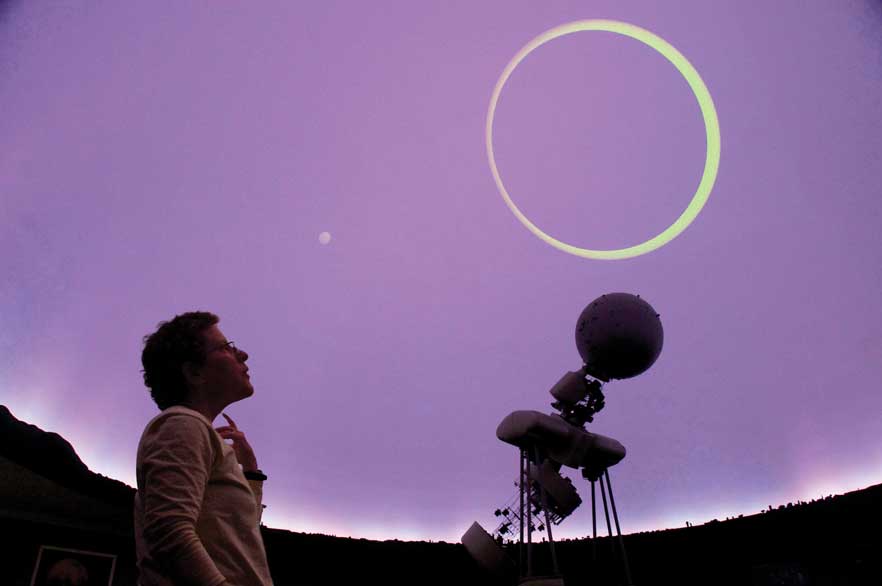Syllabus: ASTR 228

A glimpse at Exoplanets and the Search for Life in the Universe.
The Course
A survey of planetary systems around other stars and current research into the possibilities for life elsewhere in the universe. Coursework includes problem sets and exams, a short research paper, an oral presentation and occasional outdoor labs.
The Professor
Andrea K. Dobson, associate professor of astronomy and general studies and astronomy department chair. Her interests include solar-type stars, the history of cosmology, gender and science, and public outreach. She believes any extraterrestrial life is likely to be microbial but, “It doesn’t keep me from wondering what it would be like if it were possible for somebody to show up here and want to communicate?”
"I hope students can tie it to something else they’re studying. If it’s philosophy or biology, then pondering ‘what is life?’ Or if it’s rhetoric, asking If there’s actually intelligent life out there, what would we have to say to them?”—Andrea K. Dobson
What’s Covered
Some topics the course covers include:
- The evolution of the universe
and origin of the elements. - The origins of life on Earth.
- The evolution and effects of life on Earth.
- Methods of detecting planets around other stars.
- Potentially habitable locations in the solar system.
Extra Credit
 Scientists believe Mars has the greatest potential to have life or to have had it in the past. As chief engineer for NASA’s Jet Propulsion Lab, Rob Manning ’80 plays a major role in that search. His team designs the rovers that explore the surface of the Red Planet, including Perseverance, which touched down in February 2021. Manning spoke about it in a 2021 virtual event for Whitman alumni.
Scientists believe Mars has the greatest potential to have life or to have had it in the past. As chief engineer for NASA’s Jet Propulsion Lab, Rob Manning ’80 plays a major role in that search. His team designs the rovers that explore the surface of the Red Planet, including Perseverance, which touched down in February 2021. Manning spoke about it in a 2021 virtual event for Whitman alumni.